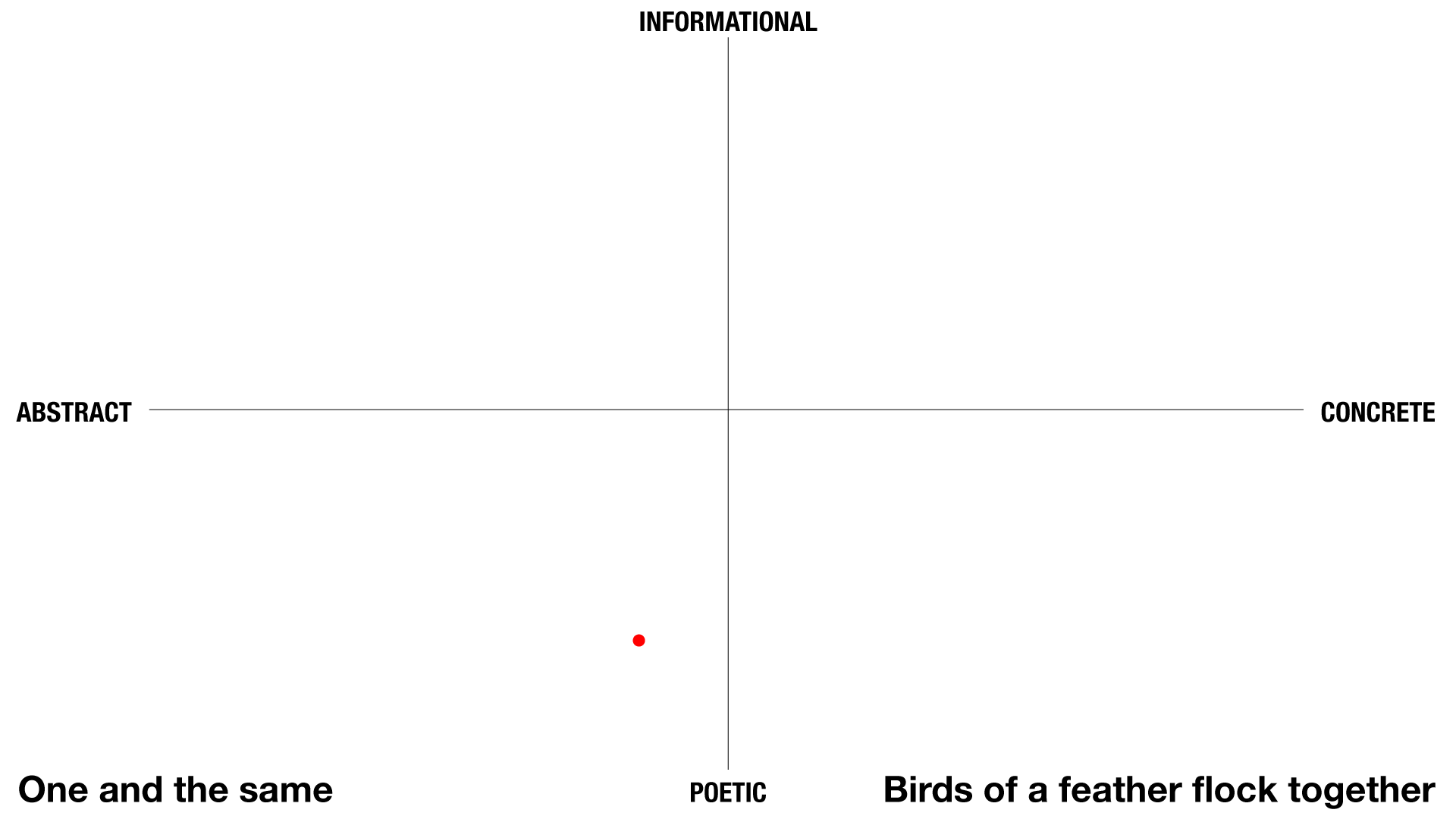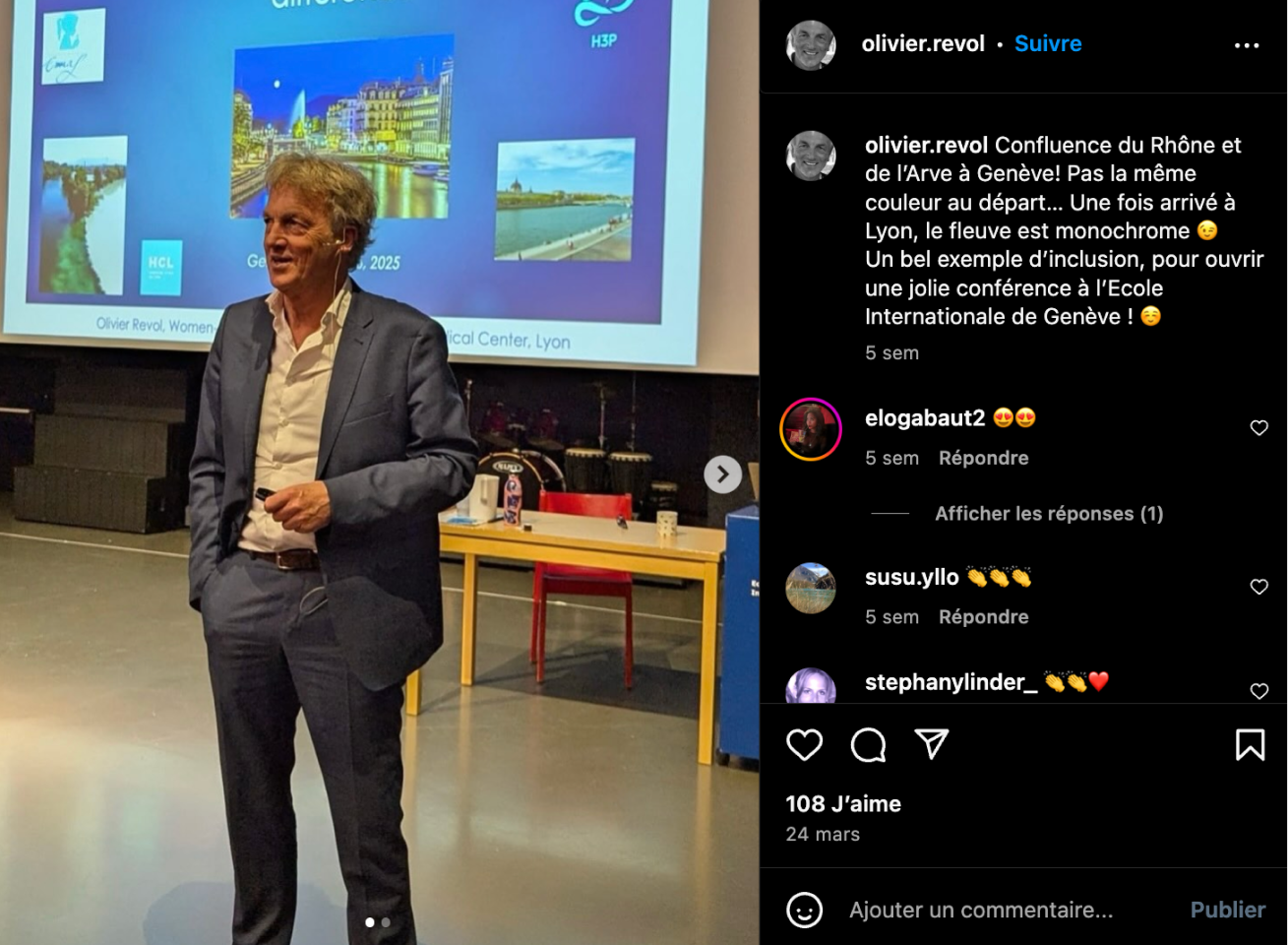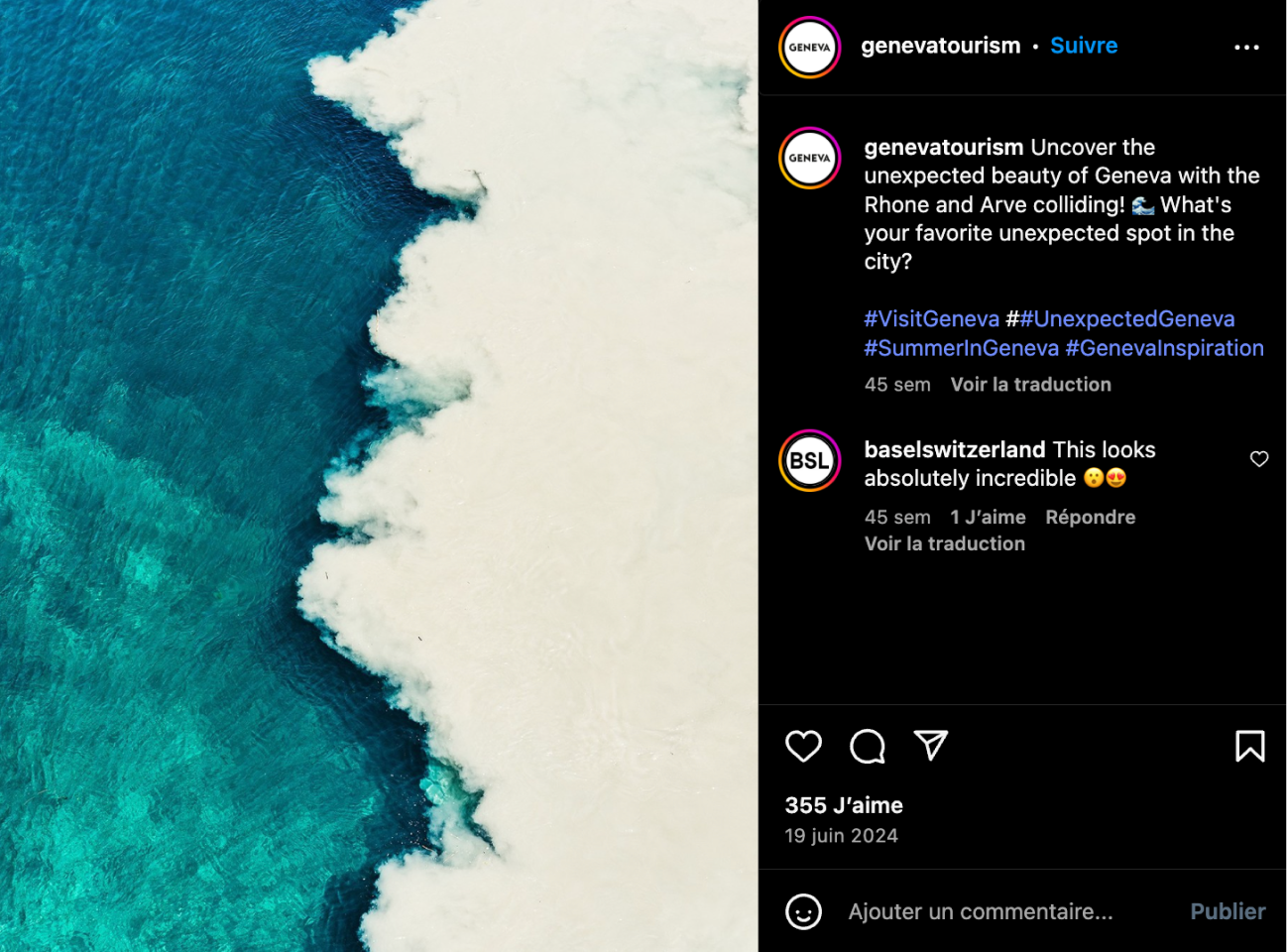Words Around Nature and Technology
Created: Thu May 29 2025
Want to explore language, how we talk about nature and technology.
Co-Haviation
In the first completed project in the master's program, which was about the co-habitation of birds and planes at the Geneva airport, my peer Tara Hächler and I listed idioms about birds and duality to help us with our concept.
- One and the same
- Two sides of the same coin
- The same difference
- Birds of a feather flock together
- Bird’s Eye View
- Up in the Air
We then mapped some of these in quadrants to further make sense of our direction.

We landed on somewhere in the middle but closer to being poetic.

See more of the process here: View PDF | View Slides
Virtual Reality Workshop
Similarily, this methodology was applied to the last project in the program. My peer Antonin Ricou and I started to create a story about a rock. Again, to help us with our concept and the chapters, we listed out how humans have talked about stones and rocks through language.
- A stone’s throw
- Stoned to death
- A stepping stone
- Leave no stone unturned
- Between a rock and a hard place
- Kill two birds with one stone
- Stone age
- Milestone
- Dumb as a rock
- Solid as a rock
- A rolling stone gathers no moss
What About Rivers?
This is a bit harder for me to come up with. Will revisit and add as I keep this in mind.
Some are more about water in general:
- In deep water
- Cry me a river (cry me a stream or tributary or creek just doesn't have the same ring or weight)
- Go with the flow
- It's raining cats and dogs
Note: include screenshots of comments from social media about rivers.
French vs English
There's a distinction between streams, rivers and major rivers in French where the word fleuve in French is often just said as river. I wonder why there's a distinction between a river that flows in to another river, and a river that flows into a large body of water.
Brands and Naming
Perhaps why I'm interested in language and how we use it is because of my background in graphic designa and branding. How we talk about the work and give names to things can give an impression of what to expect but also provides insights to currency and locality.
There's Apple, mouse, the cloud, stream. Tech companies have also been inspired by nature. In the article "Technoloy brands inspired by nature" by Luminita Todea, they go in depth with listing brand names, services and objects that relate to nature. There's this constant connecton with nature even in a tech driven world. Not only are we taking resources from Earth, we are also using the words that describes our natural environment.
ABCs of Rivers
Before reading Exercises D'Observation by Nicolas Nova, I had already started to develop a methodology to incorporate language. However, in Exercice #17: Collecte Idiomatique, Nova asks the reader to create printed outputs in the form of ABCs from their research. In addition, a variation is to listen to how locals talk about a subject matter and to create a printed sheet with the terms. This physical output takes the researcher away from the screen or scribbles in their notebooks, to something that is tangible and consumable. This formal output also will open dialogue with people who encounter it.
So, what I would like to do:
- Interview locals about the confluence in Geneva
- Continue gathering online comments
- Create a booklet with idioms, terms and quotes
- Observe people's interaction with the booklet
Prelim Research
Landmarks as tourist attraction, to build a city's reputation. Love that their bestie Basel is in the comments showing support.
A new way of thinking about the terms river and rivalry. While rivalry comes from the Latin word rivalis which means those that share the same source of water stream. And that means if you're on the same stream, you're competing for this valuable resource. But in the video above, a person came up with a new way of thinking about the etymology and that is, when two rivers meet, one river takes over the other. In this case, the Arve becomes the Rhône after the confluence.
An explanation on the etymology of river and rivalry. Although looking similiar, they come from different roots. River coming from Latin rīpa meaning river bank.
Bibliography
NOVA, Nicolas, 2022. Exercices d’observation: dans les pas des anthropologues, des écrivains, des designers et des naturalistes du quotidien. Paris : Premier parallèle. La vie des choses. ISBN 978-2-85061-141-4.
TODEA, Luminița, 2015. Technology brands inspired by nature. In : FELECAN, O. (ed.), Name and Naming, pp. 856–867.
← Back to garden
